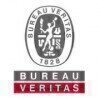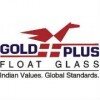Filter interviews by
Cashify Joiner Engineer Interview Questions and Answers
Be the first one to contribute and help others!
Interview questions from similar companies

Electrical Engineer Interview Questions & Answers
Medhaj Techno Conceptposted on 27 Nov 2024
I applied via Company Website and was interviewed in Oct 2024. There were 2 interview rounds.
MCQ question Electrical & Reasoning
(5 Questions)
- Q1. What's is transformer & why use
- Q2. Why step up & step down voltage
- Q3. What is power factor and frequency
- Q4. What's is Earthing
- Q5. Draw Single line diagram of generation & distribution
Interview Preparation Tips

I was interviewed in Oct 2023.

(4 Questions)
- Q1. Concrete cube mould tolerance ??
- Ans.
Concrete cube mould tolerance refers to the acceptable range of dimensions for the mould used to cast concrete cubes for testing.
Concrete cube mould tolerance is typically around +/- 1mm for most standard moulds.
Tolerance may vary depending on the specific standards or specifications being followed.
It is important to ensure that the mould used meets the required tolerance to ensure accurate test results.
Examples of con...
- Q2. First class brick strength ??
- Ans.
The strength of first class bricks is typically around 10.5 N/mm^2 to 14 N/mm^2.
First class bricks are high-quality bricks used for construction.
They have a minimum crushing strength of 10.5 N/mm^2.
The maximum crushing strength of first class bricks is around 14 N/mm^2.
These bricks are uniform in shape and size, with sharp edges and smooth surfaces.
- Q3. Maximum concrete pouring height ??
- Ans.
The maximum concrete pouring height depends on various factors such as the type of concrete, formwork design, and weather conditions.
Maximum concrete pouring height for normal concrete is typically around 1.5 to 2 meters.
For high-performance concrete, the maximum pouring height may be reduced to around 1 meter.
Factors such as formwork stability, concrete mix design, and weather conditions can affect the maximum pouring...
- Q4. What is the ratio of m25 concrete ??
- Ans.
The ratio of M25 concrete is 1:1:2
The ratio of M25 concrete is 1 part cement, 1 part sand, and 2 parts aggregate
This ratio is commonly used in construction for medium strength concrete
For example, to make 1 cubic meter of M25 concrete, you would need 1/4 cubic meters of cement, 1/4 cubic meters of sand, and 1/2 cubic meters of aggregate
Interview Preparation Tips

(1 Question)
- Q1. Mechanical Inspection related question

(1 Question)
- Q1. What about RT and Ut
- Ans.
RT and UT are non-destructive testing methods used in inspection to detect flaws in materials.
RT stands for Radiographic Testing, which uses X-rays or gamma rays to inspect the internal structure of materials.
UT stands for Ultrasonic Testing, which uses high frequency sound waves to detect flaws or measure thickness in materials.
RT is commonly used for detecting internal defects in welds, castings, and forgings.
UT is o...
Interview Preparation Tips

(1 Question)
- Q1. Last salary & Work Experience

I applied via Recruitment Consulltant and was interviewed in Jan 2023. There were 2 interview rounds.

(2 Questions)
- Q1. About power electrical and instrumentation
- Q2. About Machine. Transformers,motor instrument
Interview Preparation Tips
- Electrical Machines
- Field Instruments

Inspection Engineer Interview Questions & Answers
International Certification Servicesposted on 9 May 2021
Interview Questionnaire
1 Question
- Q1. Related to my job profile and experience
Interview Preparation Tips

Electrical Engineer Interview Questions & Answers
Medhaj Techno Conceptposted on 31 Oct 2023

(1 Question)
- Q1. Before work and study level
(1 Question)
- Q1. Work experience based

I applied via Naukri.com and was interviewed before Apr 2023. There were 2 interview rounds.
(5 Questions)
- Q1. What are the different grades of material you have worked on
- Ans. I have experience on working with materials SA-516 Gr. 70 and IS-2062 in MS, SS316, SS304, Inconel and Monel
- Q2. What is material specification for piping, forgings fittings tubes fasteners for MS materials
- Ans.
Material specifications for piping, forgings, fittings, tubes, and fasteners for MS materials include ASTM standards and specific grades.
ASTM A53/A53M - Standard Specification for Pipe, Steel, Black and Hot-Dipped, Zinc-Coated, Welded and Seamless
ASTM A105/A105M - Standard Specification for Carbon Steel Forgings for Piping Applications
ASTM A234/A234M - Standard Specification for Piping Fittings of Wrought Carbon Steel ...
- Q3. What is the difference between SS316 and SS304
- Ans.
SS316 has higher corrosion resistance and strength compared to SS304.
SS316 contains molybdenum which enhances its corrosion resistance, while SS304 does not.
SS316 is more suitable for use in harsh environments like marine applications, while SS304 is more commonly used in indoor settings.
SS316 has higher tensile strength and creep strength than SS304.
- Q4. Difference between SS316L and SS316
- Ans.
SS316L has lower carbon content than SS316, making it more corrosion resistant and suitable for welding applications.
SS316L has lower carbon content (0.03% max) compared to SS316 (0.08% max)
SS316L is more corrosion resistant due to the lower carbon content
SS316L is commonly used in welding applications where post-weld annealing is not possible
SS316 is more commonly used in applications where higher strength is required
- Q5. Where do we refer the remaining chemical composition for SA-516 Gr. 70 plates
- Ans.
Refer to ASME Section II Part A for remaining chemical composition of SA-516 Gr. 70 plates
Refer to ASME Section II Part A for detailed chemical composition
Check the material test report (MTR) for specific chemical composition
Consult with the manufacturer or supplier for any additional information
Questions related to Standard reference, codes, welding and inspection
Interview Preparation Tips
- Welding Inspection
- Impact testing
- Quality Standards
- ASME Codes
- CSWIP

I applied via Naukri.com and was interviewed before Nov 2022. There were 2 interview rounds.

(2 Questions)
- Q1. How much gap required in fit-up of pipes.?
- Ans.
The gap required in fit-up of pipes depends on the welding process and material being used.
The gap for TIG welding is typically 1/16 to 1/8 inch.
For MIG welding, the gap can be slightly larger, around 3/32 to 1/8 inch.
The gap should be uniform along the entire length of the joint for proper welding.
The material being welded also influences the gap size, with thicker materials requiring larger gaps.
- Q2. What is IQI in radiography testing
- Ans.
IQI stands for Image Quality Indicator, used in radiography testing to ensure the quality of the radiographic image.
IQI is a tool used to determine the quality of radiographic images by measuring the image quality parameters such as contrast, resolution, and sensitivity.
It consists of a series of patterns or objects with specific details that are placed on the radiographic film along with the test object.
The IQI is the...
Interview Preparation Tips
Tell us how to improve this page.
Cashify Interviews By Designations
- Cashify Software Engineer Interview Questions
- Cashify Brand Promoter Interview Questions
- Cashify Sales Officer Interview Questions
- Cashify Software Developer Interview Questions
- Cashify Store Manager Interview Questions
- Cashify Team Manager Interview Questions
- Cashify Accounts & Finance Executive Interview Questions
- Cashify Area Sales Manager Interview Questions
- Show more
Interview Questions for Popular Designations
- Electrical Engineer Interview Questions
- QA QC Engineer Interview Questions
- Electrical Supervisor Interview Questions
- Executive Engineer Interview Questions
- Senior Engineer Mechanical Interview Questions
- Shift Engineer Interview Questions
- Instrument Engineer Interview Questions
- Junior Engineer Electrical Interview Questions
- Show more
Interview Questions from Similar Companies
|
Store Manager
82
salaries
| ₹2.8 L/yr - ₹5.2 L/yr |
|
Assistant Manager
72
salaries
| ₹3 L/yr - ₹8 L/yr |
|
Area Sales Manager
57
salaries
| ₹4 L/yr - ₹8.6 L/yr |
|
Brand Promoter
44
salaries
| ₹1.8 L/yr - ₹3.2 L/yr |
|
Deputy Manager
40
salaries
| ₹2 L/yr - ₹8.5 L/yr |

Yaantra

Karma Recycling

GreenDust

Quikr
Calculate your in-hand salary
- Home >
- Interviews >
- Cashify Interview Questions >
- Cashify Joiner Engineer Interview Questions





